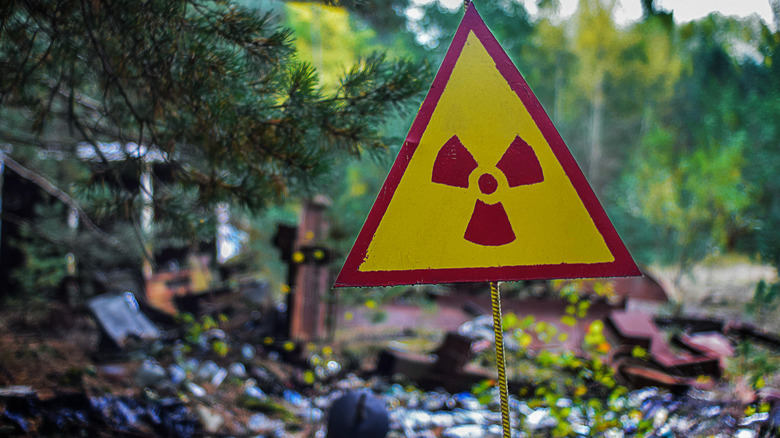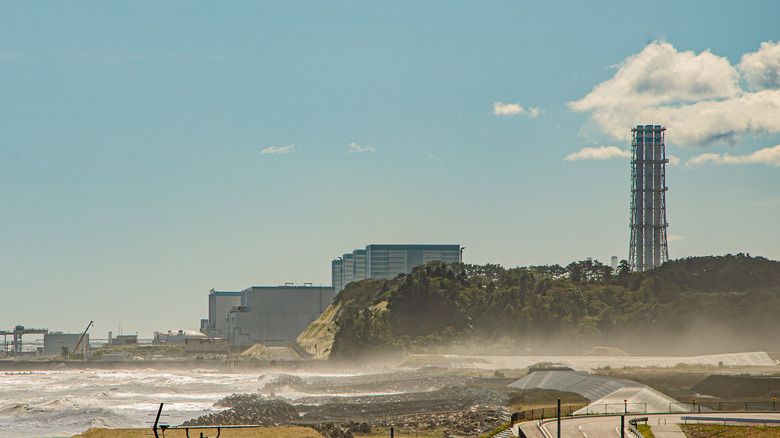We Could Have Avoided The Fukushima Nuclear Plant Disaster. Here's Why
On March 11, 2011, Japan experienced the most powerful earthquake to ever touch the Southeast Asian country's history. The massive seismic event was also immediately followed by a deadly tsunami. In the midst of trying to make sense of the colossal earth-shaking incident, rising waters came ashore and created even more devastation. The lives of over 20,000 people were claimed by the two disasters (via Reuters). But another major disaster for Japan was on the brink.
In the aftermath of the tsunami, the Fukushima Daiichi nuclear plant would become another casualty of the events. Built in 1967, the plant was established by the Tokyo Electric Power Company (via Power Technology). In 1971, the company began building boiling water reactors, which would be completed in 1979 for a total of six, according to Britannica.
The seaside structure had been a cause of concern for emergency officials when they learned that a tsunami was near after the earthquake struck, and they moved to evacuate nearby towns. The tsunami waters flooded the plant, but normal functionality helped automatically shut down three reactors. However, no power meant that no water could be utilized to effectively cool down overheated reactors. As the reactors kept getting hotter and hotter, it started to melt. A system failure immediately followed. On March 12, a reactor exploded, and then two days later, another blew up (via History). A third and final reactor would explode on March 15.
A disaster officials should've saw coming
During all these explosions was also the emission of radiation. It led to more evacuations and the Japanese government cordoning off miles of land to prevent exposure. The Fukushima nuclear plant disaster is considered the second-worst nuclear accident after Chernobyl, per Process Industry Forum.
Today, the site of the plant remains a radioactive area. But could it have all been avoided? Apparently so.
In 2015, a study revealed that the entire ordeal could've been prevented. Two researchers came to the conclusion that the 2011 disaster would've never happened if the site was being properly managed. Per the University of Southern California, the researchers cited three errors that played a role in how the disaster happened. They discussed that the plant was not being properly regulated. They pointed to structural flaws for why the generators couldn't continue cooling off the heated reactors despite no power. Management also poorly designed the plant, which, in essence, left them poorly equipped to accurately consider the potential height of possible tsunami waters. They concluded that while they did do studies on it, their numbers were way off. Another factor was the Japanese electric company's failure to take into account other earthquakes and implement more effective safety measures. The studies they did were not focused on tsunamis in particular. This left the earthquake-prone country severely lacking in updated measures that could've been taken ahead of the earthquake.
Japan did come to that realization in the following year. In 2017, people who had to evacuate were compensated (via BBC).

